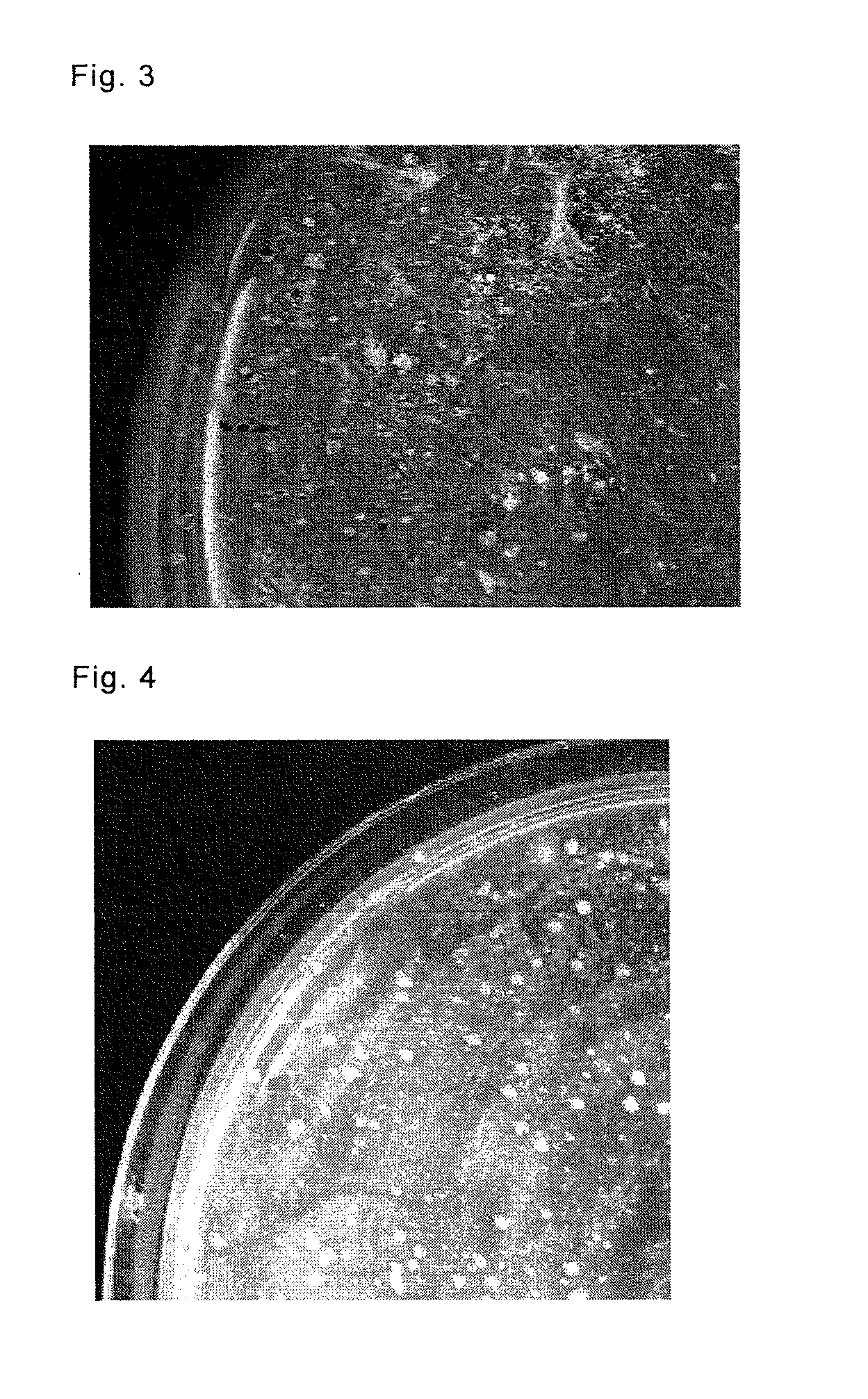Method for producing selective medium and use thereof
a selective medium and technology of selective media, applied in the field of selective media production, can solve the problems of difficult detection of pathogens, particularly the degree of contamination with pathogens, and the poor selectivity of conventional selective media of target microorganisms such as pathogens, and achieve the effects of reducing the risk of unavailability of starting materials, reducing the risk of contamination, and reducing the number of lot differences
- Summary
- Abstract
- Description
- Claims
- Application Information
AI Technical Summary
Benefits of technology
Problems solved by technology
Method used
Image
Examples
example 1
[0103]Method for Producing Selective Medium for Acidovorax avenae subsp. avenae
(1) Selection of Carbon Sources
[0104]Genome sequencing of Acidovorax avenae subsp. avenae is still in progress. Thus, genomic information about Acidovorax avenae subsp. citrulli (of the same species) was used. A limited search of carbon sources was conducted (Table 5). Based on the results, the following were subjected to primary screening: arabinose, mannitol, trehalose, inositol, arginine, aspartic acid, isoleucine, leucine, lysine, methionine, phenylalanine, proline, threonine, tyrosine, valine, and polygalacturonic acid.
[0105]The procedure carried out herein comprises the following steps of: accessing the KEGG database (http: / / www.genome.jp / kegg / ); clicking “KEGG PATHWAY;” selecting “MODULE” as a subject of “Search;” inputting the name of any one of the above carbon sources subjected to primary screening as a search term into the column next to “for;” pressing the button labeled “Go” to initiate sear...
example 2
[0112]Method for Producing Selective Medium for Agrobacterium tumefaciens
(1) Selection of Carbon Sources
[0113]Genome sequencing of Agrobacterium tumefaciens is still in progress. However, there are databases containing enormous quantities of genetic information about Agrobacterium tumefaciens. A limited search of carbon sources was conducted (Table 5). Based on the results, the following were subjected to primary screening: arabinose, mannitol, trehalose, inositol, arginine, aspartic acid, isoleucine, leucine, lysine, methionine, phenylalanine, proline, threonine, tyrosine, valine, and polygalacturonic acid.
[0114]The procedure carried out herein comprises the following steps of: accessing the KEGG database (http: / / www.genome.jp / kegg / ); clicking “KEGG PATHWAY;” selecting “MODULE” as a subject of “Search;” inputting the name of any one of the above carbon sources subjected to primary screening as a search term into the column next to “for;” pressing the button labeled “Go” to initiat...
example 3
[0121]Method for Producing Selective Medium for Burkholderia caryophylli
(1) Selection of Carbon Sources
[0122]Genome sequencing of Burkholderia caryophylli is still in progress. However, there are databases containing enormous quantities of genetic information about Burkholderia caryophylli. A limited search of carbon sources was conducted (Table 5). Based on the results, the following were subjected to primary screening: arabinose, mannitol, trehalose, inositol, arginine, aspartic acid, isoleucine, leucine, lysine, methionine, phenylalanine, proline, threonine, tyrosine, valine, and polygalacturonic acid.
[0123]The procedure carried out herein comprises the following steps of: accessing the KEGG database (http: / / www.genome.jp / kegg / ); clicking “KEGG PATHWAY;” selecting “MODULE” as a subject of “Search;” inputting the name of any one of the above carbon sources subjected to primary screening as a search term into the column next to “for;” pressing the button labeled “Go” to initiate s...
PUM
| Property | Measurement | Unit |
|---|---|---|
| volume | aaaaa | aaaaa |
| volume | aaaaa | aaaaa |
| resistance | aaaaa | aaaaa |
Abstract
Description
Claims
Application Information
 Login to View More
Login to View More - R&D
- Intellectual Property
- Life Sciences
- Materials
- Tech Scout
- Unparalleled Data Quality
- Higher Quality Content
- 60% Fewer Hallucinations
Browse by: Latest US Patents, China's latest patents, Technical Efficacy Thesaurus, Application Domain, Technology Topic, Popular Technical Reports.
© 2025 PatSnap. All rights reserved.Legal|Privacy policy|Modern Slavery Act Transparency Statement|Sitemap|About US| Contact US: help@patsnap.com



